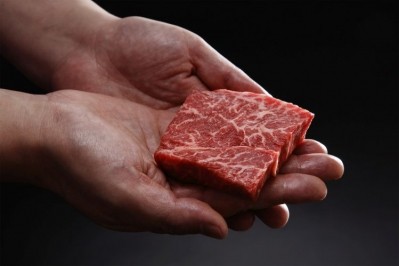Red meat once again in crosshairs as study links high consumption with chemical associated with heart disease

Research published this month in the European Heart Journal found when 113 volunteers in a small randomized 2-arm crossover study consumed the equivalent of about 8 ounces of steak or two quarter-pound beef patties daily for one month, they had blood levels of a gut-generated chemical called trimethylamine N-oxide (TMAO) that were on average three times higher than when they consumed a diet rich in either white meat or mostly plant-based proteins.
TMAO, which is a dietary byproduct from digesting nutrients that are abundant in red meat, has been identified in other studies as “another culprit” contributing to heart disease, alongside the high saturated fat levels in red meat, according to the study authors.
As such, the elevated levels of TMAO observed in this study linked to a diet high in red meat were associated with a 4.6% increase in relative risk for all-cause mortality or 4.7% compared with non-meat or white meat diets, respectively, they claimed.
These results also echo those of a recent meta-analysis that found increases in plasma TMAO observed with a red meat diet would correspond to an approximate 4.5% increase in relative risk of mortality compared with the non-meat diet, and a 4.3% difference in mortality compared with white meat diet, according to the present study.
A mechanism for action remains elusive
Recognizing the risk posed by confounding factors inherent in diet-related research, the study sought to isolate the impact of protein selection on TMAO levels by also controlling the amounts of calories consumed by subjects as well as the amount of fat.
With regards to fat, half of the participants consumed high-fat versions of the three diets and the researchers observed similar results. Thus, the researchers conclude, “the effects of the protein source on TMAO levels were independent of dietary fat intake.”
While the researchers were able to isolate the impact of protein selection on TMAO levels they were not able to nail down the exact way in which TMAO affects heart disease.
“Despite the many striking associations between elevated TMAO levels and incident CVD risks, and the numerous animal model studies supporting a mechanistic contribution of TMAO to adverse CVD-related phenotypes, the direct contribution of TMAO to CVD pathogenesis in humans is unclear, and the impact of dietary interventions on TMAO have not been extensively investigated,” the researchers explain in the study.
However, a press release published by the journal points out that previous research shows TMAO enhances cholesterol deposits into cells of the artery wall, and interacts with the blood cells that regulate clotting – increasing the risk of clot-related events, such as a heart attack and stroke.
Reversing course
While these findings may sound grim, researchers noted that the high levels of TMAO associated with a diet rich in red meat are reversible and will drop dramatically within four weeks of discontinuing high consumption levels of red meat.
As such, the senior researcher and head of Preventive Cardiology & Rehabilitation at the Cleveland Clinic Stanley Hazen notes in a statement that the findings underscore the dramatic effect of diet on the potential for heart disease.
The results also support current dietary guidelines that recommend limiting consumption of red meat and eating a variety of foods, including more produce, low-fat dairy and plant-protein, according to the researchers.
Professor: The role of TMAO is uncertain in vascular disease
Tom Sanders, DSc, professor of nutrition and dietetics at King's College, London, who specializes in the mechanisms by which diet influences risk of cardiovascular disease, told FoodNavigator-USA that he was "not surprised by the finding."
That said, he added: "The role of TMAO is uncertain in vascular disease because blood levels are also influenced by renal function which is a powerful predictor of CVD. It would be necessary to show that lowering TMAO by the dietary change described improves vascular function. There are no differences in CVD mortality between occasional meat/fish eaters and vegetarians so it may be more associated with heavy meat consumption as in this small study.
"TMAO is derived from microbial synthesis from trimethylamine (found in fish especially shark family), choline (also a component of lecithin) and carnitine (found in meat). The gut flora is modified by diet particular by the availability of fermentable carbohydrate reaching the large bowel.
"[Trimethylaminuria, better known as] fish odor syndrome - a genetic disorder characterised by very high TMAO levels, is treated by avoiding seafood as well avoiding dietary sources. It does not seem to be characterised by excess CVD."
The study was funded largely by the National Heart, Lung, and Blood Institute (NHLBI), part of the National Institutes of Health.

















